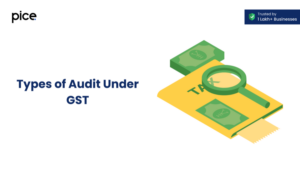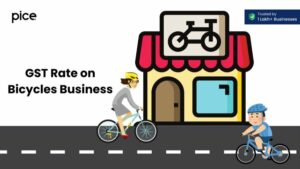How to File Composition GST Online: A Guide
- 20 Sep 24
- 14 mins

How to File Composition GST Online: A Guide
Key Takeaways
- The GST Composition Scheme is designed to simplify tax compliance for SMEs by allowing them to pay GST at a nominal rate of their turnover.
- Eligible businesses under this scheme benefit from reduced compliance efforts, with the need to file only quarterly and annual returns instead of monthly.
- The scheme offers lower tax rates ranging from 1% to 6%, depending on the business type, significantly lower than the standard GST rates.
- Restrictions under the scheme include the inability to make inter-state supplies, collect GST from customers, or claim Input Tax Credit (ITC).
- Opting in or out of the GST Composition Scheme requires filing specific forms (GST CMP-02 to opt in and GST CMP-04 to opt out) at the beginning of the financial year or upon becoming eligible/ineligible.
Understanding the GST Composition Scheme
The GST Composition Scheme is a facilitative measure under the Goods and Services Tax (GST) regime in India, designed to simplify the tax compliance process for small and medium enterprises (SMEs). This scheme allows eligible businesses to pay GST at a nominal rate of their turnover, thereby reducing the burden of detailed record-keeping and frequent tax filings. It's a voluntary option meant primarily for small taxpayers to ease their transition into the GST framework, aiming to create a supportive environment that fosters business growth and compliance.
Objectives of the GST Composition Scheme
The primary objective of Composition Tax Scheme is to reduce the burden of tax compliance for small businesses. It aims to:
- Simplify the tax filing process by reducing the frequency of returns.
- Offer a reduced rate of tax compared to the normal tax rates under GST.
- Minimize the compliance costs for small taxpayers.
Benefits of the Scheme
- Reduced Compliance Load: Businesses enrolled under this scheme need to file quarterly returns instead of monthly, significantly reducing the paperwork and compliance efforts.
- Lower Tax Rates: The scheme offers the benefit of lower tax rates ranging from 1% to 5%, depending on the nature of the business (manufacturing, trading, or services), which is much less compared to the tax rates under the regular GST regime.
- Simplified Tax Procedures: With the elimination of the need to maintain detailed records and issue detailed invoices, the administrative burden on small businesses is greatly reduced.
Key Rules of the GST Composition Scheme

The implementation and functioning of the GST Composition Scheme are governed by a set of key rules, which ensure that the benefits are accurately targeted towards the intended recipients. Understanding these rules is crucial for businesses to make an informed decision about opting for the scheme.
1. Eligibility Criteria
- The scheme is open to businesses with an annual turnover of up to Rs. 1.5 crore. However, for businesses located in the North-Eastern states and Himachal Pradesh, the threshold is Rs. 75 lakh.
- It is available to manufacturers, traders, and restaurants not serving alcohol. Recent amendments have also included service providers and mixed suppliers (goods and services) with a turnover up to Rs. 50 lakh.
2. Tax Rates
- The GST rates under this scheme are significantly lower than the regular GST rates, varying from 1% to 5%:
- Manufacturers and producers pay 1% GST on their turnover.
- Traders are required to pay 1% GST on their taxable turnover of sales.
- Restaurants not serving alcohol pay 5% GST on their turnover.
- Service providers and mixed suppliers can pay 6% GST on their turnover.
3. Restrictions
- Businesses cannot engage in inter-state transactions or supply of goods. This scheme is designed to support local businesses.
- Normal Taxpayers under the scheme are not allowed to collect GST from their customers. The GST paid is a cost to the business.
- Input Tax Credit (ITC) cannot be claimed by businesses under this scheme. This means the tax paid on inputs cannot be deducted from the taxes on sales.
- The scheme excludes certain businesses, such as those dealing in non-taxable goods, e-commerce operators, unregistered supplier or those making supplies that are not allowed under the scheme.
4. Compliance Requirements
- Businesses opting for the scheme need to file quarterly returns (Form GSTR-4) instead of the monthly returns required under the regular GST regime.
- An annual return (Form GSTR-9A) is also required.
- They must mention “Composition taxable registered person, not eligible to collect tax on supplies” on every notice or signboard and on every bill of supply issued by them.
5. Opting In and Out
- Businesses can opt in or out of the scheme at the beginning of the financial year. To opt in, they must file Form GST CMP-02 with the government before the start of the financial year or at the time of obtaining registration.
- If a business wishes to withdraw from the scheme or becomes ineligible, they must file Form GST CMP-04.
6. Transition Provisions
- On opting in, any ITC on the closing stock will have to be paid back to the government since ITC is not available under the scheme.
- On opting out or becoming ineligible, the taxpayer is eligible to claim ITC on the stock available on the date of transition.
The GST Composition Scheme, through its simplified compliance and reduced tax rates, aims to support small businesses by making the tax process more manageable. It's essential for businesses to carefully consider their eligibility, the benefits, and the restrictions of the scheme to ensure that it aligns with their operational capabilities and business model.
Exclusions from the GST Composition Scheme
While the GST Composition Scheme offers numerous benefits to small taxpayers by simplifying tax compliance, it's not available to all businesses. Understanding the exclusions is crucial before considering enrollment. Here are the key categories of businesses and activities that are excluded from opting for the GST Composition Scheme:

- Inter-State Suppliers: Businesses that supply goods or services across state borders cannot opt for the composition scheme. The scheme is designed primarily for intra-state transactions.
- E-commerce Sellers: Suppliers selling goods through an e-commerce platform that collects tax at source are not eligible for the composition scheme.
- Non-Taxable Goods Suppliers: Businesses that deal in goods or services that are exempt from GST cannot opt for this scheme.
- Service Providers (with exceptions): Initially, most service providers were excluded from the scheme, except for restaurant services. However, amendments now allow certain service providers and mixed suppliers (supplying both goods and services) with a turnover of up to Rs. 50 lakh to opt for the scheme.
- Manufacturers of Notified Goods: Certain goods are notified by the government as ineligible for the composition scheme. Businesses manufacturing such goods cannot opt for this scheme.
- Casual Taxable Person or Non-Resident Taxable Person: Those who supply goods or services on a casual or non-resident basis are not eligible.
Understanding these exclusions is vital for businesses to assess their eligibility and make an informed decision about whether the GST Composition Scheme is right for them.
Step-by-Step Guide to Enrolling in the GST Composition Scheme

Enrolling in the GST Composition Scheme is a straightforward process, done entirely online through the GST portal. Here's a step-by-step guide to help you through the enrollment process:
Step 1: Log In to the GST Portal
- Begin by accessing the official GST portal (gst.gov.in). Log in using your credentials (username and password).
Step 2: Navigate to the Composition Scheme Application
- Once logged in, navigate to the 'Services' tab, then select 'Registration', followed by 'Application to Opt for Composition Levy'.
Step 3: Fill in the Form
- You will be directed to Form GST CMP-02. Fill in the required details, including your business details and the financial year for which you want to opt for the composition scheme.
Step 4: Submit the Form
- After filling in all necessary details, review the form to ensure accuracy and completeness. Submit the form electronically.
Step 5: Acknowledgement
- Upon successful submission, you will receive an acknowledgement on your registered email and mobile number. This confirms your application to opt for the composition scheme.
Step 6: Filing Form GST ITC-03 (if required)
- If you have previously been registered under the regular GST scheme and have any Input Tax Credit (ITC), you are required to pay an amount equivalent to the ITC on inputs in stock, semi-finished, and finished goods through Form GST ITC-03 within 90 days of opting for the composition scheme.
Step 7: Compliance and Returns
- After enrolling in the scheme, ensure compliance with the scheme's rules, including the quarterly filing of returns using Form GSTR-4 and an annual return using Form GSTR-9A.
Opting for the GST Composition Scheme can significantly reduce the compliance burden for small businesses, making it an attractive option for eligible taxpayers. It's essential to carefully consider your business's eligibility and compliance capabilities before opting in, as well as to stay informed about any changes in the scheme's rules and requirements.
How to file GST Composition Return Online?
Filing GST returns under the Composition Scheme, also known as Composite GST returns, is simplified to ease the compliance burden on small taxpayers. Under this scheme, taxpayers are required to file returns only once every quarter, unlike the monthly filing required for regular taxpayers. Additionally, an annual return is also mandatory. Here’s a step-by-step guide to simplify the process of filing Composite GST returns, ensuring compliance while minimizing the administrative burden.
Step 1: Understand Your Filing Requirements
- Quarterly Returns: You need to file Form GSTR-4 by the 18th of the month following the end of the quarter. This form summarizes your sales, purchases, and the composite tax paid during the period.
- Annual Return: File Form GSTR-9A by the 31st of December of the next fiscal year. This form details your yearly sales, taxes collected, and any other relevant information for the entire fiscal year.
Step 2: Collect and Organize Your Data
Before you start filing your returns, gather all necessary financial records, including sales invoices, purchase invoices, and any other documents that record your business transactions during the period. Organizing your data beforehand can significantly streamline the filing process.
Step 3: Log In to the GST Portal
Access the GST portal using your GSTIN/User ID and password. The portal is your gateway to all GST-related filings, including the submission of your composite GST returns.
Step 4: Navigate to the Returns Dashboard
Once logged in, go to the ‘Services’ menu, select ‘Returns Dashboard’, and then choose the financial year and the return filing period for which you are preparing to file.
Step 5: Fill in the Quarterly Return (GSTR-4)
- For quarterly filings, select Form GSTR-4. The form will require details of your turnover, tax payable, and any other pertinent information related to your business activities during the quarter.
- Ensure that all information is accurate and reflects all your business transactions for the quarter.
Step 6: Submit the Quarterly Return
After filling out Form GSTR-4, review all entries for accuracy and completeness. Submit the form using your Digital Signature Certificate (DSC) or through an Electronic Verification Code (EVC) for authentication. Ensure you submit by the deadline to avoid any late fees.
Step 7: Prepare and File Your Annual Return (GSTR-9A)
- Begin preparing for the annual return well before the deadline. Form GSTR-9A requires comprehensive details of your sales and purchases throughout the year.
- Similar to the quarterly return, review your entries thoroughly before submission. The annual return provides a snapshot of your entire fiscal year’s transactions and must be filed accurately.
Step 8: Pay Any Due Tax
Before submitting your returns, ensure that any due tax is paid. The payment of tax is integral to the return submission process, and your returns are considered incomplete without the settlement of due taxes.
Step 9: Keep Records of Your Filings
After submitting your returns, download and keep a copy of the acknowledgment for your records. It's essential to maintain records of all filings and payments for at least six years in case of any future inquiries or audits.
Tips for Simplifying the Process
- Use Accounting Software: Leveraging GST-compliant accounting software can help automate and simplify the process of preparing your returns.
- Stay Informed: Keep up with any changes in GST laws and filing procedures to ensure compliance.
- Seek Professional Help: If you find the process overwhelming, consider hiring a GST practitioner or an accountant specializing in GST to assist with your filings.
Filing composite GST returns doesn't have to be complicated. By following these steps and staying organized, small taxpayers can ensure compliance with the GST regulations under the Composition Scheme, minimizing the compliance burden and focusing more on their business growth.
💡If you want to pay your GST with Credit Card, then download Pice Business Payment App. Pice is the one stop app for all paying all your business expenses.
 By
By 

















